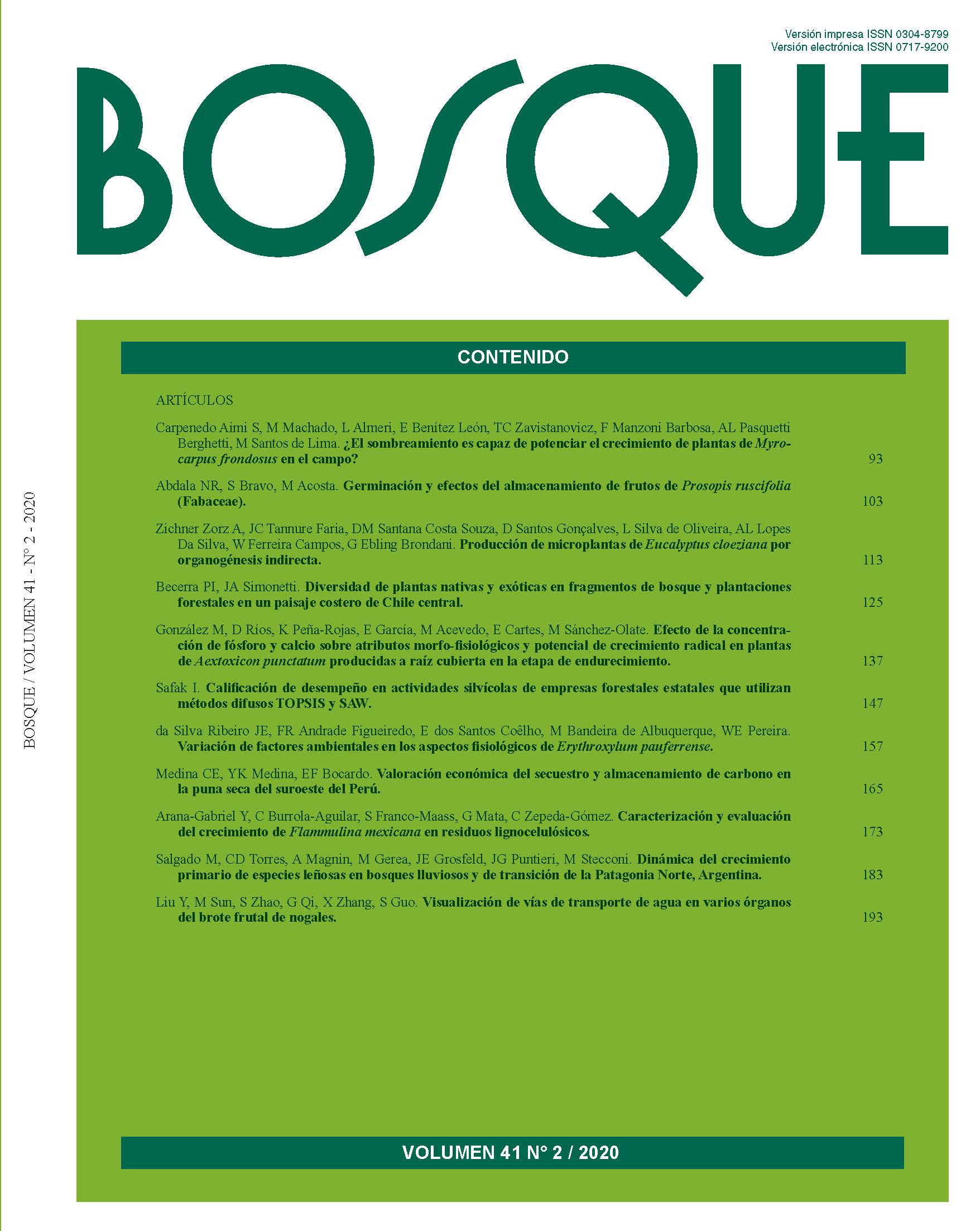Visualization of water transport pathways in various organs on the fruit-bearing shoot of walnut trees
Main Article Content
Abstract
To reveal the regular patterns of water transport in fruit-bearing shoots of walnut (Juglans regia), water transport pathways for various organs were observed using dye-tracing technique; water potential, water status and water transport rate were determined for each of these organs. Water potential in the pedicel, petiole, lateral shoot and main shoot was -2.59, -2.85, -1.68 and -0.37 MPa, respectively. Significant differences were noted among various organs in terms of water status. The ratio of bound water to free water in the petiole was the highest (1.93 RBC), followed by the main shoot, lateral shoot and pedicel. Water transport speed in the petiole was the fastest (3.13 cm/min), followed by the lateral shoot, pedicel and main shoot. However, the water transport rate of the main shoot was the highest, and higher than the sum of the other three organs. The xylem in the petiole was separated from the main shoot; at the top of the main shoot, the xylem was divided into two parts, one of which was connected to the xylem of the pedicel and the other to the lateral shoot. During the shell-hardening period of fruits, the dye was found at the edge of the fruit vascular bundle, although, it was not at the central vascular bundle. No dye was found in the main and accessory buds, instead, only a small part of the xylem was dyed between the accessory bud and the main shoot. Water transport pathways were different for various organs. Thus, the transport and distribution of water in various organs was affected by their water potential, tissue structure and water requirement.

